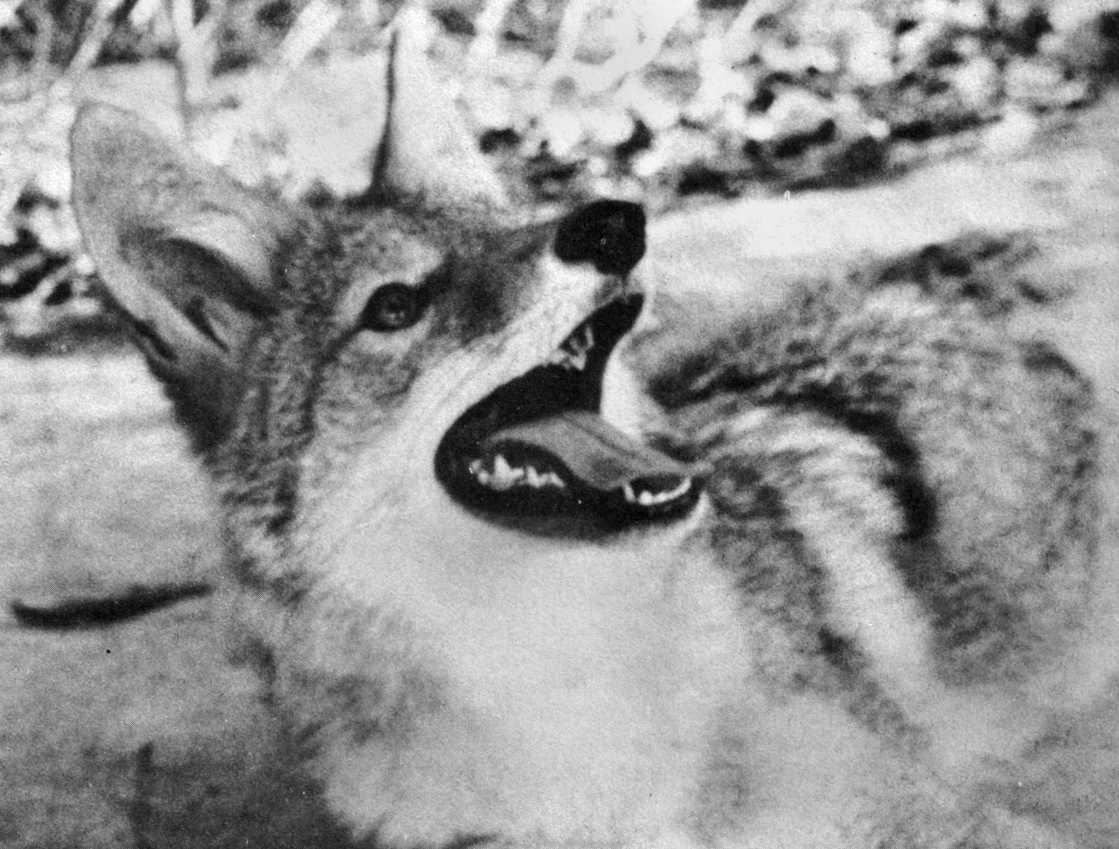1921 — The sports teams of North Carolina College of Agriculture and Mechanic Arts, N.C. State’s predecessor, had been at different times called the “Farmers and Mechanics,” the “Red Terrors,” and the “Aggies.” In 1920, coach Harry Hartsell’s football team, captained by J.T. “Runt” Faucette and then called the “Techs,” were criticized for their up-and-down play.
Before the season-opening football game on Sept. 25, 1921 against the Randolph-Macon Yellow Jackets, an anonymous fan wrote into the Technician, bemoaning the team’s unstable coaching situation and the off-field antics of some of the players. He compared those players to “a pack of wolves,” and the student body found it hilarious. The football team then became known as the Wolfpack.
1946 — One man who didn’t find it so hilarious was J.W. Harrelson, for whom Harrelson Hall was named. Harrelson served as N.C. State’s chancellor from 1945 to 1953, just after World War II. Harrelson objected to the moniker, reminding veterans and civilians on campus that the name “Wolfpack” had been assigned to Nazi U-boats for the formation they kept.
“The only thing lower than a wolf is a snake in the grass,” Harrelson decreed.
Harrelson proposed a contest, with football tickets as the prize, to see who could create a new N.C. State mascot. Some of the submissions included the Cardinals, Cultivators, Cotton-pickers, Auctioneers, Calumets and Pine-rooters, which is a term related to pigs.
“We’ll field a growling, rep-snorting team no matter what the mascot is,” Beattie Feathers, the football coach at the time, said. “So the choice had better be good in order to keep pace with the boys.”
However, an overwhelming majority maintained that the “Wolfpack” was near and dear to them, and the title remained.
“The wolf is a scrappy, tough animal — the spittin’ image of our team,” one writer insisted.
1946 — Ira Helms, a student in mechanical engineering, took it upon himself to create a mascot for the cheerleading squad to use during games. After initially abandoning the project due to high production costs, Helms welded, painted and constructed his robot wolf, finishing his metal monster the morning of the football season opener against Wake Forest. The paint was reportedly still wet when the new mascot took the field.
“That was the first time we had a real mascot,” said Tim Peeler, a writer for GoPack.com that has written several books on N.C. State athletics.
Helms’ robot was affectionately named “Hell” for its creator, but was also called “The Wolf Monster” and “The Trojan Wolf.” He stood 7 feet tall and was 10 feet across at the chest. Helms climbed inside the contraption and employed another student to operate a fake control box, leading spectators to believe that Hell was an actual robot.
“With a body similar to Frankenstein’s monster and the ferocious head of a wolf, it is expected to create a sensation in the game and spur the team on to another victory,” the Technician proclaimed on Oct. 18, 1946.
Helms himself never climbed into Hell after the season opener because he claimed it was too hot, but cheerleaders operated the machine for the rest of the season, one of N.C. State’s best to date. The team went 8-2 and made its first bowl game, the 1946 Gator Bowl. After the bowl, N.C. State cheerleaders and the band retired Hell and held a wake for him.
1947 — The rest of N.C. State’s athletic teams, still called the “Red Terrors,” opted to change their names to the “Wolfpack” as well.
1966 — A four-month old pup — or “Lobo III,” as it was called — was purchased by the student body for $125 to commemorate the opening of Carter Stadium. Lobo III was preceded by two wolf mascots. The first died, and the other escaped under suspicious circumstances.
1967 — A zoology professor noticed that “Lobo III” was not a Timberwolf, as the students who bought him had believed; he was a coyote. Students embraced the mistake, rallying around the “Kool Koyote.” They spray painted the slogan on the free expression tunnel and wrote it in chalk around campus.
1950s — Cheerleaders begin to dress up as a wolf to inspire students at sporting events.
1975 — The future Ms. Wuf was unveiled to coincide with the introduction of women’s athletics. The wolf mascots were married on the basketball court in 1981 as part of the season finale festivities. Wake Forest University’s mascot, the Demon Deacon, presided over the faux ceremony.
“They are technically married, although I don’t believe Mrs. Wuf wears her ring these days,” Peeler said.
1983 — According to Peeler, Scott Joseph, the man behind the mask from 1981 to 1984, was instrumental in helping the Wolfpack mascot “evolve.” He was also the one who coined the title “Mr. Wuf.”
“He was very active,” Peeler said. “He made his own costume and at some point put ‘Mr. Wuf’ on the back, and it stuck.”
In an interview with The Wolfpacker, Joseph said that he and his mother came up with the now-famous name.
“The only thing that was provided was the head, the rest you had to come up with on your own,” Joseph said. “My mom sewed a suit out of fur and gave me a jersey. So we sat down and decided to call him ‘Mr. Wuf’ and she sewed that on my jersey.”
2008 — Different costumes have been phased in and out over the last 20 years, with Mr. and Mrs. Wufs’ heads have become less elongated and coyote-esque and more humanized and kid-friendly.
Lobo III was purchased by the student body for $125 in 1966. Lobo III was later revealed to be not a timberwolf, but a koyote.









